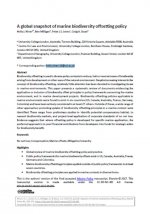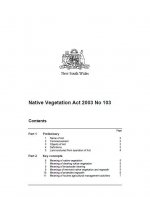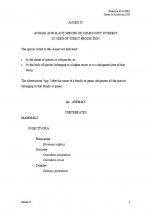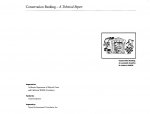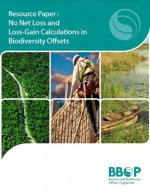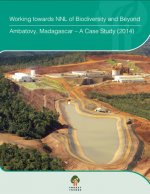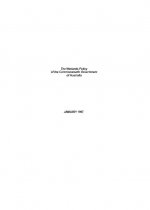A global snapshot of marine biodiversity offsetting policy
Holly J. Niner, Ben Milligan, Peter J.S. Jones, Craig A. Styan - University College London, Australia, Centre for Law and Environment, University College London, Department of Geography, University College London, University College London, AustraliaBiodiversity offsetting is used in diverse policy contexts to reduce, halt or reverse losses of biodiversity arising from development or other uses of the natural environment. Despite increasing interest in the concept of biodiversity offsetting, relatively little attention has been devoted to investigating its use in marine environments. This paper presents a systematic review of […]
Integrating invasive mammal eradications and biodiversity offsets for fisheries bycatch: conservation opportunities and challenges for seabirds and sea turtles
C. Josh Donlan, Chris Wilcox - Biol Invasions, Biol InvasionsThe removal of invasive mammals from islands is one of societys most powerful tools for preventing extinctions and restoring ecosystems. Given the demonstrable high conservation impact and return on investment of eradications, new networks are needed to fully leverage invasive mammal eradications programs for biodiversity conservation at-large. There have been over 800 invasive mammal eradications […]
Native Vegetation Act 2003 No 103
Government of AustraliaAn Act relating to the sustainable management and conservation of native vegetation; to repeal the Native Vegetation Conservation Act 1997; and for other purposes. [Assented to 11 December 2003]
Council Directive 92/43/EEC of 21 May 1992 on the Conservation of Natural Habitats of Wild Fauna and Flora: Annex IV
European UnionThe species listed in this Annex are indicated: by the name of species or subspecies, or by the body of species belonging to a higher taxon or to a designated part of that taxon.
Conservation Banking A Technical Report
Toyon Environmental Consultans, Inc.This report has been prepared as a reference for a variety of audiences, but the primary target is someone who is considering establishing a conservation bank. The text is addressed to that person — when we say “you”, we mean the person seriously interested in setting up a conservation bank. However, we hope that the […]
Consultation Document to Accompany Insight’s Presentation to the World Parks Congress, 13 September 2003 Biodiversity: Towards Best Practice for Extractive and Utility Companies
Kerry ten KateHuman activities are making an increasing impact on the integrity of ecosystems that provide essential resources and services for human well-being and economic activities. In particular, biodiversity2 is being lost at an unprecedented rate,3 while global population and consumption are growing4. This presents a risk both to business and to society more broadly.
Resource Paper: No Net Loss and Loss-Gain Calculations in Biodiversity Offsets
Toby Gardner, Amrei von Hase - BBOPThis document is one of two Resource Papers (the other is on Limits to What Can Be Offset) written to update and complement information already published in the Offset Design Handbook (BBOP, 2009) and to support the interpretation and understanding of the Principles, Criteria and Indicators being developed for the BBOP Standard on Biodiversity Offsets […]
Working towards NNL of Biodiversity and Beyond Ambatovy, Madagascar
A Case Study (2014)
Amrei von Hase, Andrew Cooke, Aristide Andrianarimisa, Rivolala Andriamparany, Vanessa Mass, Robin Mitchell, Kerry ten Kate - Forest Trends, Ambatovy, Wildlife Conservation Society, Ambatovy, Ambatovy, The Biodiversity Consultancy, Forest TrendsAmbatovy joined the Business and Biodiversity Offsets Programme (BBOP) in 2006 as a pilot project. In 2009, Ambatovy, together with BBOP, published a case study on the companys biodiversity management and offset work up to that point (available at https://www.forest-trends.org/documents/fi les/doc_3118.pdf). The present document serves as an update on Ambatovys progress achieved since then and […]
Environmental Offset Policies, Principles, and Methods: A Review of Selected Legislative Frameworks
Bruce McKenneyEnvironmental offsets seek to ensure that unavoidable adverse environmental impacts of development are counterbalanced by environmental gains, with the overall aim of achieving a net neutral or beneficial outcome. In line with sustainable development, offsets represent one important tool for maintaining or enhancing environmental values in situations where social and economic development is sought despite […]
Victoria ‘s Native Vegetation Management: A Framework for Action Summary Brochure 1
Government of AustraliaThe need for a consistent approach to native vegetation management and retention across the State and support for Local Government during the introduction of the Framework, were issues repeatedly highlighted by submissions to the draft document. In recognition of this feedback and the technical nature of the Framework, there are 10 regionally based Native Vegetation […]


